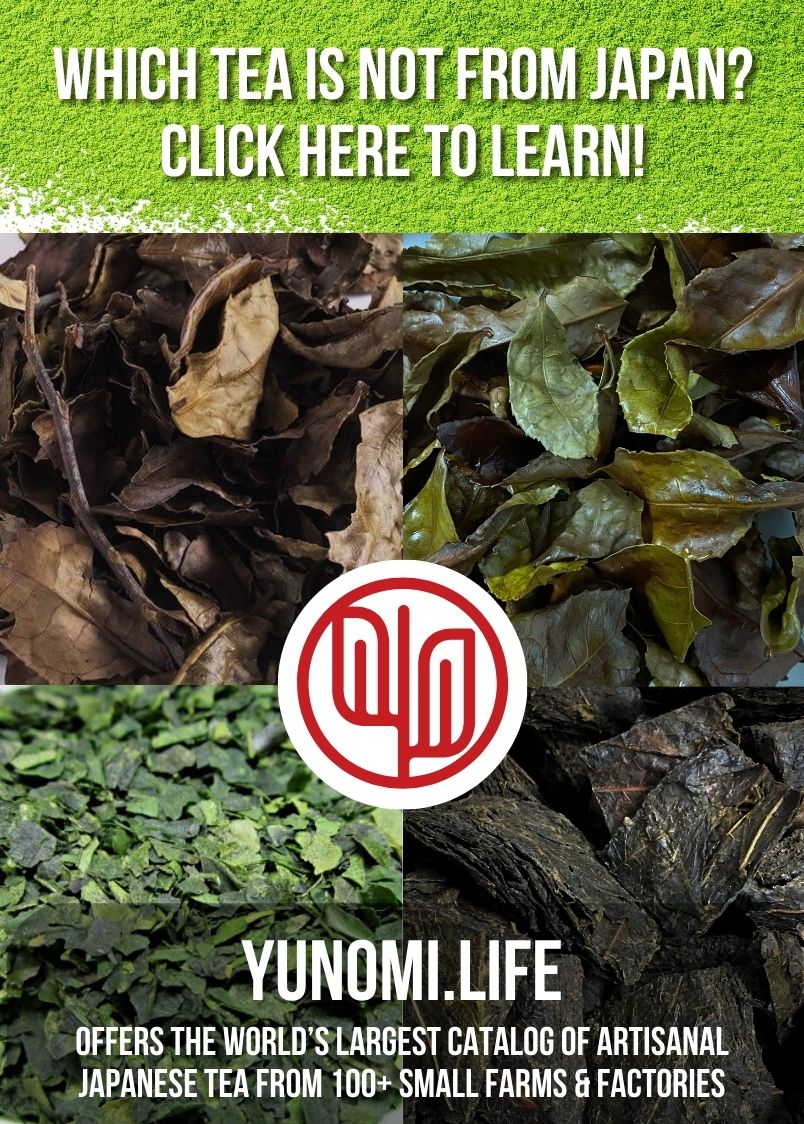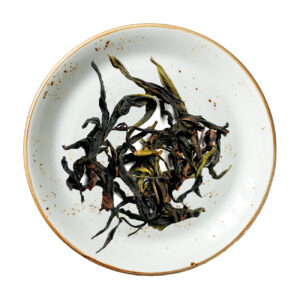Uji Gyokuro, Classic Representation of Japanese Green Tea
- Infused leaves of a premium sencha on the taster mug
- Infused leaves of a fine gyokuro on the taster mug
tasting notes
Normally most brands and gardens would advise you to infuse the tea with very low water temperature (mostly between 40°~60°C). Somehow there is a Japanese sentiment that the lower the temperature employed, the finer the tea is.

Close-up of the leaves of a fine gyokuro after infusion
Notice the thinness of the leaves now that they have un-rolled. The creases and brokenness tell of the amount of processing done onto them. The softness and small size of these leaf fragments are good in allowing a short infusion time, but the same advantage also mean the tea can easily be too bitter and too strong upon not-so-well-controlled time-temperature combination. They also cling quite stubbornly to the teapot.
a different infusion approach
I simply cannot agree with that. Especially in colder weather when heat loss from the teapot to the environment can be so rapid, even the manufacturer’s usual recommendation of 1 minute of short infusion time means a lukewarm tea when decanted, however well you pre-heat the teapot and cups. This is further amplified by the small size of teaware involved — because of the price of the tea and a much higher leaves to water ratio, it is both pragmatic as well as impossible to make a good infusion using a large teapot.
The reason for the low temperature recommendation bases on the idea that the lower the temperature, the less catechins dissolve in the water, and some catechins contribute to bitterness and astringency. For those who do not like any bitterness in their tea, this may be a solution. However, even with the enriched savoury taste of gyokuro, a tea without a well-integrated and balanced bitterness and water temperature to heighten the aroma is simply too, well, simple tasting. This is particularly true for most of green tea varieties, gyokuro including. Preheat your small pot well and follow the idea of a high leaves to water ratio, 8g to 100 ml water as most brands recommend, but use nothing lower than 65°C water and infuse for at least 1.5 minute (most recommend 30 sec to 1.5 min). A good high density Yixing pot could even out the bitterness while a porcelain pot may heighten it.
the taste of a fine gyokuro
A fine gyokuro can yield a dense lime green liquor with a warm aroma that is suggestive of baked seaweed and hints of roasted nuts. The taste is savoury with an accent of sea salt and an overtone of baked vegetable. This “umami” character, as savoury taste is referred to nowadays, is a result of the raised level of amino acids in the tea leaves by way of the shaded growth duration prior to plucking.
Unlike whole-leaf tea, broken-leaf teas mostly yield murky liquors, and gyokuro is particularly so. Another problem with this soft broken leaves is that they stick to the inner opening of the teapot spout and easily block it, especially those designs with built-in strainers. One way round it is to use an infuser or an infuser bag, such as those popularly available in Japanese stores, but to maintain the best infusion result for a pricy tea, the best solution maybe to use a pot with a wide inner opening for the spout and let the leaves pour out, filtered with a strainer over the cup.













I drink green tea and relax.
green tea and a smoothie- wow i love this!